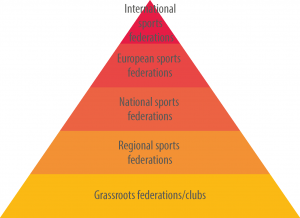The term ‘specificity of sport’ refers to the long-running debate about the application of EU law requirements – such as competition and free movement, for example – to sports, and the existence of a ‘sporting exception’, a legal concept established and developed through ECJ rulings and the decisional practice of the European Commission, notably as regards competition rules.
Practitioners claim that sport’s inherent characteristics set it apart from other economic and social activities and can ‘justify a tailored application of European law and policies’. Recognised in the European Council’s Declaration on the specific characteristics of sport, and further clarified in the 2007 white paper on sport, the specificity of European sport is twofold. On the one hand, there is the specificity of sporting activities and rules (including the ‘rules of the game’ and selection criteria for sports competitions) and on the other, there is the specificity of a sport’s structure (i.e. a ‘monopolistic’ pyramid structure, with a single national association per sport and per EU country, operating under the umbrella of a single European and a single worldwide federation – see Figure 1). Importantly, the white paper made it clear that the recognition of this specificity can in no way be interpreted as a blanket exemption from the application of EU law, and that assessment of the compatibility of sporting rules with EU law can only be made on a case-by-case basis.








Be the first to write a comment.